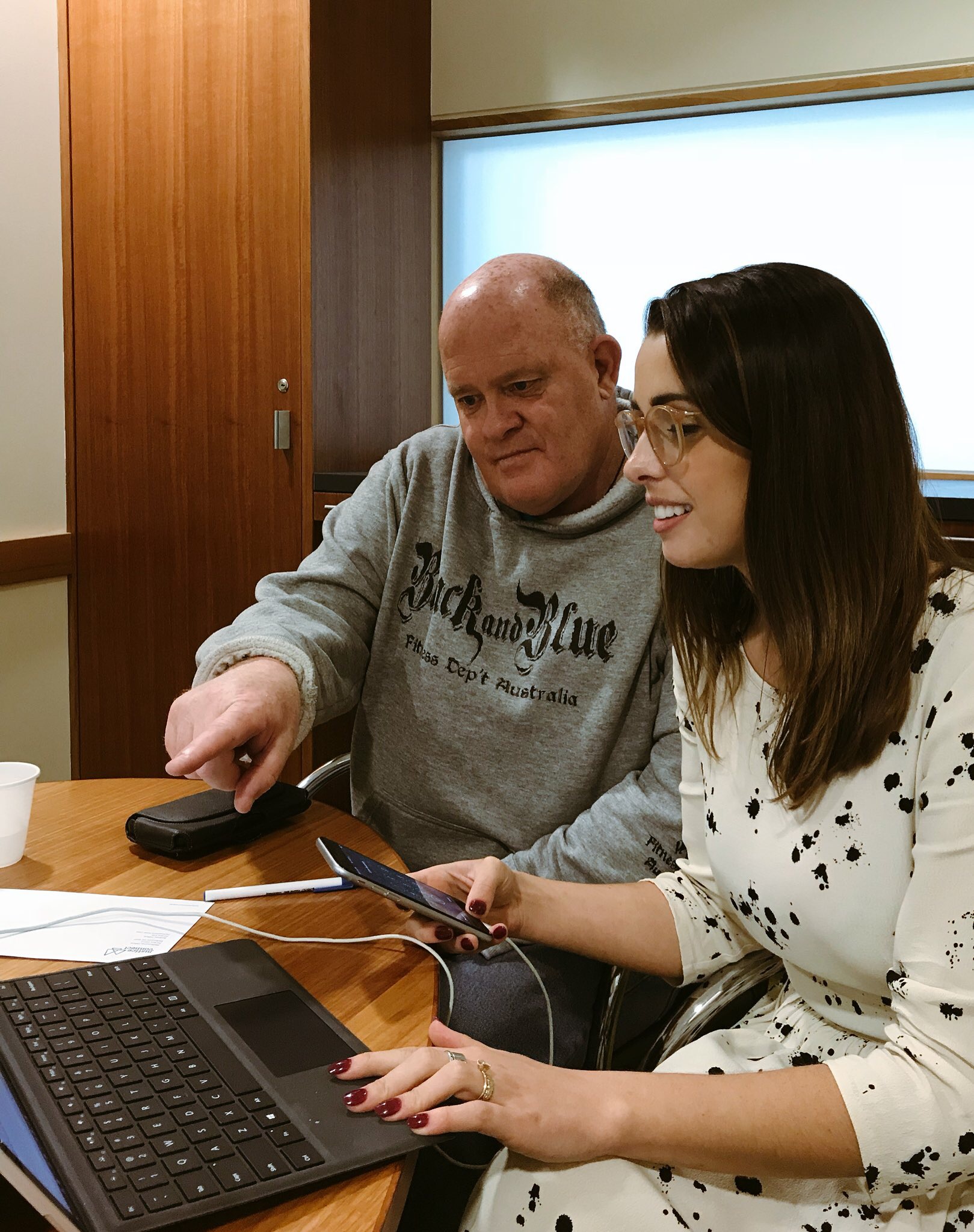Joining Up Justice
We’re supporting the sector to digitally transform and improve the experience and impact of legal help
We’re supporting the sector to digitally transform and improve the experience and impact of legal help
Joining Up Justice plots the perspectives of help-seekers and organisations as they navigate the complex and challenging journey of resolving legal issues. Within each stage of the journey, we’ve set out goals, activities, pain points, interactions and opportunities for people on both sides of the journey.
Technology has an important role to play in increasing access to justice in Australia by improving justice processes and increasing the reach and impact of services.
Digital technology is increasingly influencing nearly every aspect of our daily life. Designing justice solutions with technology in mind is critical — failing to do so is akin to persisting in designing road and transport infrastructure for horses when cars were growing in popularity, or designing for candles when houses were increasingly linked to electricity.
As the 2017 Digital Inclusion Index found: ‘Australians are spending more time — and are doing more — online. Since 2014, when data was first collected, Australia’s overall digital inclusion score has improved by 3.8 points, from 52.7 to 56.5. In 2016—2017 alone, Australia’s score rose by 2.0 points, from 54.5 to 56.5. Scores for every state and territory also increased over this period.’
We consider there are four key roles for technology innovation in improving access to justice:
Many justice organisations, courts, legal practices and community legal centres are operating with systems and technology that have fallen behind community expectations.
Out of date infrastructure and business processes constrain efficiency, service quality, scalability, the ability to communicate, share and analyse information, and consequently also the ability to assess work and impact.
Justice Connect has acknowledged that we can make improvements to our systems and technology to improve services and increase impact. In 2016 we committed to streamlining our processes and improving and integrating our systems so that our staff can spend their time doing the work where they add the most value: spending time with clients, assisting vulnerable people, engaging in policy and law reform work, building relationships and working with key partners and stakeholders. We have also committed to improving our client and stakeholder management systems.
Our Gateway Project was the product of our commitment to improving the way we work, and resulted in the development of our online intake tool, referral tool and Pro Bono Portal. We are also implementing a CRM across the organisation that will ensure that we can provide seamless service delivery experience to our clients, and can track the impact of our work.
Beyond Justice Connect, there are many opportunities for the legal assistance sector to make more use of technology to support and scale-up their work, but funding for this investment is required.
When levels of unmet legal need are so high, and there is no sign of major increases to funding the delivery of one-on-one legal assistance to people who cannot afford a lawyer, we must start innovating to find alternative, greater scale approaches to delivering meaningful legal assistance.
Justice Connect believes that service delivery innovation is critical to scale the impact of our legal services. There will always be a need for intensive, one-on-one assistance. But in the absence of significant funding increases, we must create alternative service models that focus providing one-on-one assistance to the most vulnerable and provide alternative models of assistance to others who cannot afford a lawyer.
We believe that the only way that we can begin to meet the levels of unmet legal need in Australia is to, as a sector, embrace new service models that can operate at greater scale and with greater efficiency. Some examples of our work in this space include our:
Justice Connect Answers online legal clinic
Dear Landlord self-help tool for Victorian tenants.
Much research has shown that the help-seeker experience of understanding the law, identifying legal issues, and connecting with appropriate services (if available) is unacceptably poor. Many people with legal problems never identify that they have a problem or that help may be available, and many people who start looking for help enter a referral roundabout and give up.
To address this issue, we convened the Justice Navigation Working Group, that aims to improve the way organisations and agencies work together, following human centred design practices.
The working group identified two priority areas in late 2019, of:
improving the online search experience for help-seekers: making sure that those looking for help can access clear, comprehensive information about services, that websites present information consistently, that guidance about eligibility is provided publicly, and that no matter where a help-seeker lands, they will be able to find their way to appropriate services
increasing the use of human centred design practices in the design of service entry and exit points

Technology has an important role to play in increasing access to justice in Australia by improving justice processes and increasing the reach and impact of services.
We should not rely on blanket assumptions about who can and cannot benefit from technology, but instead should make clients, their needs and abilities the starting point for designing legal services, and, ideally, the legal system at large.
It is important that bodies in the legal sector and the justice system have access to, and make use of, user-centred design practices. It is also important that legal sector bodies, which are traditionally risk-averse, embrace a more experimental approach to designing and piloting service improvements and new solutions, including using technology.
When funding is made available for technology projects within sectors, it often results in the fragmented delivery of many different systems that are not designed in a joined-up way. The legal assistance sector has an opportunity to apply strategic and human centred design practices and get digital systems working for the sector from the start.
The sector also needs to ensure that rather than a proliferation of fragmented projects, strategic, system-level investments are made. These investments could include:
whole-of system entry points
systems to help make facilitated referrals
whole-of-sector outcomes measurement systems
Margaret Hagan outlines the 6 different ‘orders’ of investment in legal design that can be made in this article.
Recognising the resourcing strain justice organisations are under, any reluctance to divert resources from meeting client needs to focus on innovation projects is understandable.
Dedicated funding is needed to support technology innovation, including to fund dedicated staff time and technology and development costs, and importantly, to fund cross-sector coordination.
The return on investment for nimble technology-based innovation projects, including their reach and scalability, provides a compelling argument for investing in this progressive work.
